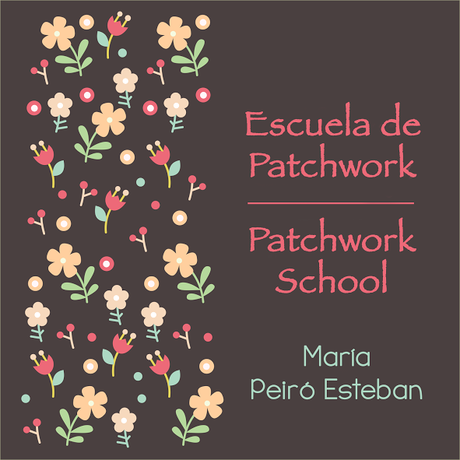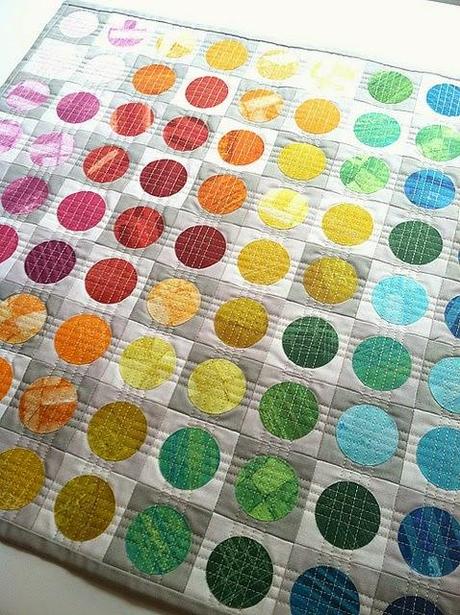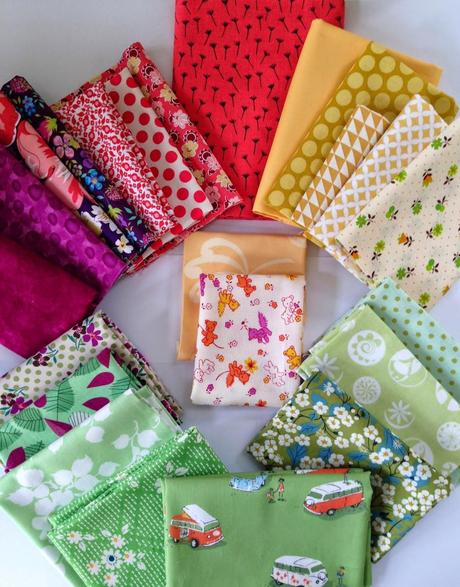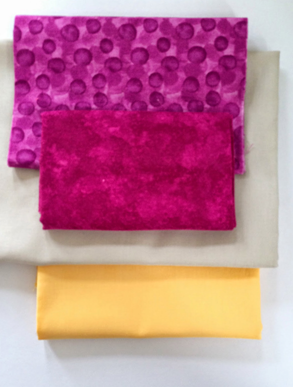Seguimos con el tema del color para elegir las telas que usaremos en un proyecto. La primera parte la podéis leer aquí.
We continue with the matter of choosing color of the fabrics we will use in a project. You may read the first part here.

La tonalidad / The tone
La tonalidad o el brillo es el grado de claridad u oscuridad de un color. Se puede determinar el brillo en el color de la tela, pero éste varía cuando se combina con otras telas. Las telas parecen más claras si se rodean con otras más oscuras, y más oscuras si se combinan con tejidos muy claros.
The tone or the brightness of a color is its degree of lightness or darkness. It is possible to determine the brightness in the color of the fabric, but this one changes when it’s combined with other fabrics. The fabrics seem to be clearer if they are surrounded by darker fabrics, and darker if they are combined with very clear fabrics.
Hay que tener cuidado si se emplean telas de tonalidad similar, pues puede perderse el efecto óptico deseado.
Care must be taken when using fabrics of similar tone, as the wished optical effect can be lost..


Estampado / Print
Podemos emplear estampados tradicionales o contemporáneos. Pero también se pueden combinar para crear un efecto especial.
We can use traditional or contemporary prints. But they also can be combined to create a special effect.
Los estampados pequeños suelen parecer sólidos (lisos) vistos de lejos, pero aportan contraste y textura cuando se observan de cerca. Los estampados grandes dan mucho juego porque permiten conseguir diferentes tonalidades y pueden emplearse para crear composiciones abstractas y/o llamativas cuando se cortan y reordenan. Se puede utilizar una plantilla en forma de ventana para seleccionar la parte del estampado más adecuada para el diseño que estamos haciendo.
The small prints use to appear to be solid (plain) seen from afar, but they provide contrast and texture when they are observed closely. Large prints give a lot of scope because they allow to obtain different tones and can be used to create abstract and/or striking compositions when they are cut and reordered. It is possible to use a window-shaped template to select the part of the print more appropiate for the design we are making.
Algunos estampados que se basan en jugar con tonalidades de un mismo color pueden funcionar como sólidos.
Some prints based on using different tones of the same color may work as solid.

Para terminar / Lastly
Aunque se hayan elegido ya las telas con las que se va a trabajar hay ciertas preguntas que debemos hacernos mientras confeccionamos nuestro quilt:
- ¿Es adecuado el contraste entre las piezas?
- ¿Obtenemos un balance adecuado en la paleta de color elegido?
- ¿Son adecuados los estampados?
- is the contrast between the pieces appropiate?
- do we get a right balance on the chosen colour palette?
- are the prints suitable?
Y con todo esto, no hay una fórmula correcta para elegir las telas. El patchwork es un arte, así que ¡creatividad al poder! Hay que dejarse llevar por el instinto, el gusto y la pasión. Cuando emprendáis un proyecto podéis partir de una tela que os guste mucho u os apetezca usar y buscar las que combinen bien, pensando siempre en el diseño final (tamaño, utilidad, fin, destinatario/s,…). También podéis coger unas cuantas telas y elegir y rechazar entre ellas formando combinaciones. Y si dos o más telas juntas os emocionan, no lo dudéis.
And with all this, there is no correct formula for choosing the fabrics. The patchwork is an art, so all power to creativity! One should be carried away by the instinct, the taste and the passion. When you take a project you can start from a fabric that you like very much or you want to use and find those which go well, always thinking on the final design (size, utility, purpose, ...). You may also take some fabrics and choose and reject some, making combinations. And if two or more fabrics together excite you, do not hesitate.

